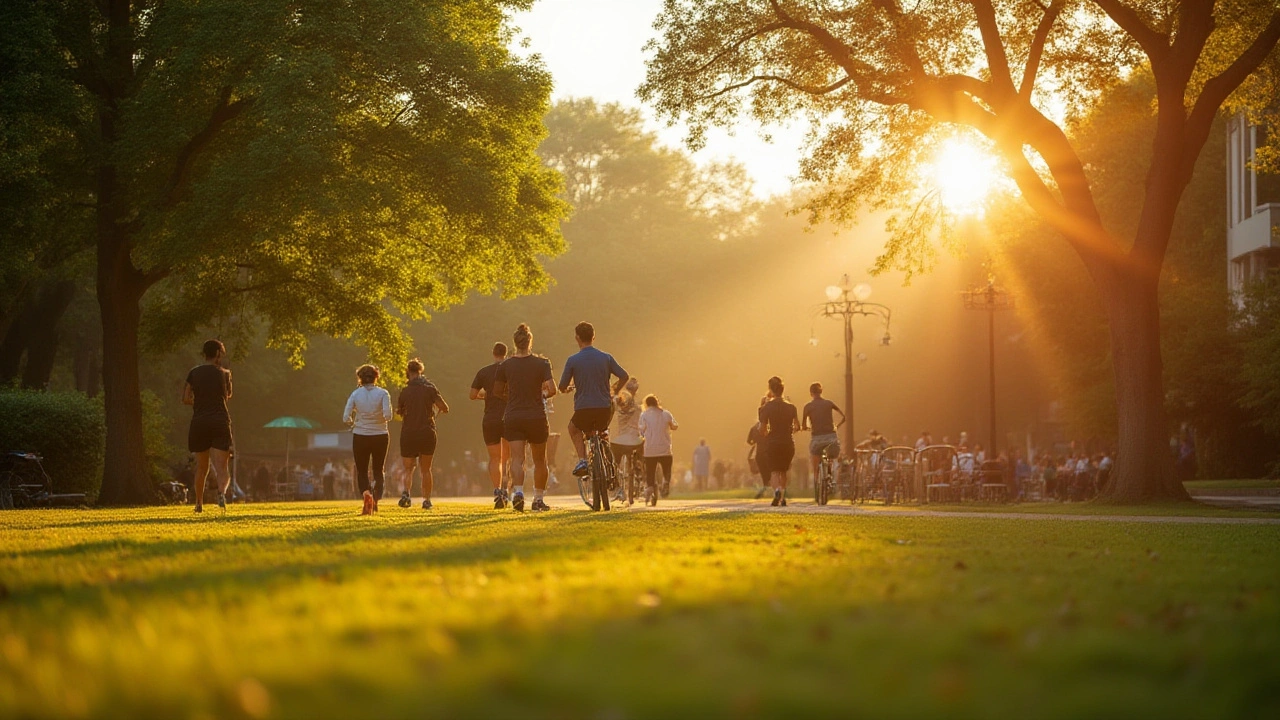If you’ve ever had a day when even brushing your teeth feels like climbing Everest, you know how sneaky mild depression can be. Not a total shutdown, but everything’s just a little heavier. You could go to your doctor and walk out with a Wellbutrin prescription, but honestly, not everyone wants to swallow a pill first thing. So what if changing your daily habits is as powerful as any medication? Researchers are starting to see that exercise, therapy, and even special lamps can work wonders.
The Power of Movement: Exercise as an Antidepressant
Here’s the kicker: scientists at Duke University found exercise was just as effective as Zoloft for mild-to-moderate depression in adults. Yes, running laps can go toe-to-toe with a prescription. They split a group into exercise, meds, and both—after 10 months, the exercise-only crew had the lowest relapse rates. That’s not just a fluke either. In 2024, the British Journal of Sports Medicine pooled results from 97 studies and found regular physical activity—cardio, yoga, even strength training—reduced depression symptoms by up to 42%. The sweet spot? Roughly 30 minutes, three to five times a week.
The magic’s in your brain. Exercise boosts endorphins and increases BDNF (brain-derived neurotrophic factor), which helps those mental gears turn smoother. Another cool bonus: it’s almost impossible to overdo walking or stretching compared to popping pills. And if you’re not a gym rat, don’t stress—gardening, dancing in the living room, or briskly walking the dog all count. For those who think motivation is the problem, try this: lay out your shoes the night before, stick your playlist on shuffle, and promise yourself "just five minutes"—most of us keep going once we start.
What’s the best time to move? Morning exercise gives a boost that lasts throughout the day, but the real answer is whatever fits into your life. If you can get outdoors, sunlight adds an antidepressant effect. But the biggest win is consistency—treat exercise like an everyday appointment with yourself. People who keep this up for at least eight weeks report the strongest mental payoff.
Should you ditch your pill for a treadmill? If you have severe depression, always check with a doctor. But for mild cases, science is shouting that movement isn’t just for your body—it’s a top-tier mind medicine too.
CBT: DIY Tools for Your Mind
If exercise tunes up your body, cognitive behavioral therapy—usually called CBT—is like pulling out an emotional toolkit and fixing your own wiring. CBT helps you identify and challenge unhelpful thoughts, then swap them out for more realistic ones. There’s no lying on a therapist’s couch talking about your childhood for hours. It’s hands-on, practical, and designed to work fast.
Most people don’t know there’s an actual manual for this approach. The "Feeling Good Handbook" by Dr. David Burns kicked off a wave of research showing CBT can match the effect of antidepressants, and the skills you learn last for years. In 80% of cases, folks using CBT report fewer depressive symptoms within just five to six sessions. And here’s a little-known fact: online CBT programs have taken off, especially after the pandemic. University trials in Sweden and Australia found them just as effective as in-person sessions.
Here’s how CBT breaks the funk. Say your brain says, “I messed up that meeting—everyone thinks I’m useless.” CBT has you write down the thought, then look for evidence. Did someone say that, or were you guessing? Next, you balance it out: “I prepared well and one person even emailed to thank me afterward.” The more you do this, the weaker those negative patterns get. Most people start seeing shifts within a few weeks.
The process can be as simple as tracking your negative thoughts on a notes app and testing them for accuracy. There are also tons of CBT workbooks and journal prompts online. But real change comes from doing, not just reading. If you want structure, a good starter is to sign up for a four-week online therapist-led program or use an app with daily check-ins.
One trick: pair your CBT sessions with a ritual (like a cup of tea) to make them less daunting. If you struggle to get started, try "guided discovery"—journaling where you pretend you’re gently questioning a friend, not criticizing yourself.

Let There Be Light: Using Light Therapy for the Mind
Weird as it sounds, sitting in front of a lamp for half an hour every morning can be just as powerful for mood as popping a Wellbutrin. Light therapy has been front-page news for folks with seasonal depression, but the newest studies show it works for people with garden-variety mild depression as well—even if you live in sun-rich places.
So, what’s the trick? The brain relies on daily light cues to manage hormones, especially melatonin and serotonin. When mornings are dark or you spend all day indoors, that cycle goes sideways—cue low mood, sluggishness, and poor sleep. Light therapy works by mimicking the full intensity of natural sunlight, usually aiming for 10,000 lux. (Regular room lighting is a measly 500 lux by comparison.)
It’s not guesswork: Harvard researchers tracked patients with mild depression who used a light box every morning. Within two weeks, nearly two-thirds reported feeling brighter and more awake. After a full month, mood scores improved as much as with standard meds. The hack: position the lamp a foot away at eye level, use it as soon as you wake up, and stay consistent. Pro tip—don’t stare into the light directly, just do your morning routine nearby.
People who benefit the most? Those with regular “slumps” during fall or winter, but office workers who barely see the sun report a surprising bump too. The side effects are minimal (a little headache or jitteriness at first for some), and the devices pay for themselves quickly. If you’re curious, a good starter LED box runs about $60 to $120 and lasts for years.
If you’re still not sure which lifestyle approach to start with, check out this guide on selecting an alternative to Wellbutrin. It breaks down what works and what doesn’t, so you can match your energy and preferences.
Comparing the Results: How Do Lifestyle Changes Stack Up?
You want the real numbers, not just wishful thinking. Here’s a breakdown comparing exercise, CBT, and light therapy with Wellbutrin for mild depression, based on published clinical results and user surveys:
| Method | Average Symptom Reduction | Time to Noticeable Effect | Duration of Benefit | Side Effects |
|---|---|---|---|---|
| Wellbutrin SR | 56% | 2-4 weeks | While on medication | Dry mouth, insomnia, anxiety |
| Exercise | 42% | 2-8 weeks | Ongoing with regular activity | Muscle soreness, rare injuries |
| CBT | 48% | 3-6 weeks | Skills last for years | Temporary discomfort, none long-term |
| Light Therapy | 38% | 1-3 weeks | As long as therapy continues | Headache, eye fatigue |
Pretty close race, right? The key difference is longevity: people who use CBT or stick with exercise tend to stay well longer, since both give your brain and body the tools to resist future dips. Light therapy works great in the short term, especially in winter. Wellbutrin, though effective, only lasts as long as you take it—and stop abruptly and those symptoms can come roaring back.
Another point: the side effects from healthy habits are typically short-lived, and the price can’t be beat. The worst part of starting a new routine? Getting through the first two weeks and battling your own excuses. But people who track progress—either journaling mood or making exercise social—report way higher success rates.
For those hunting for a alternative to Wellbutrin because of side effects, lifestyle tweaks give you the best of both worlds: you feel better naturally, and you’re in control. Just know these aren’t quick fixes—you need patience and a little consistent effort, but the payoff is you feel more like yourself again. If you’ve tried something that worked, stick with it—and if not, don’t be afraid to mix and match until the clouds part. Depression can feel stubborn, but small changes add up fast with the right plan.

